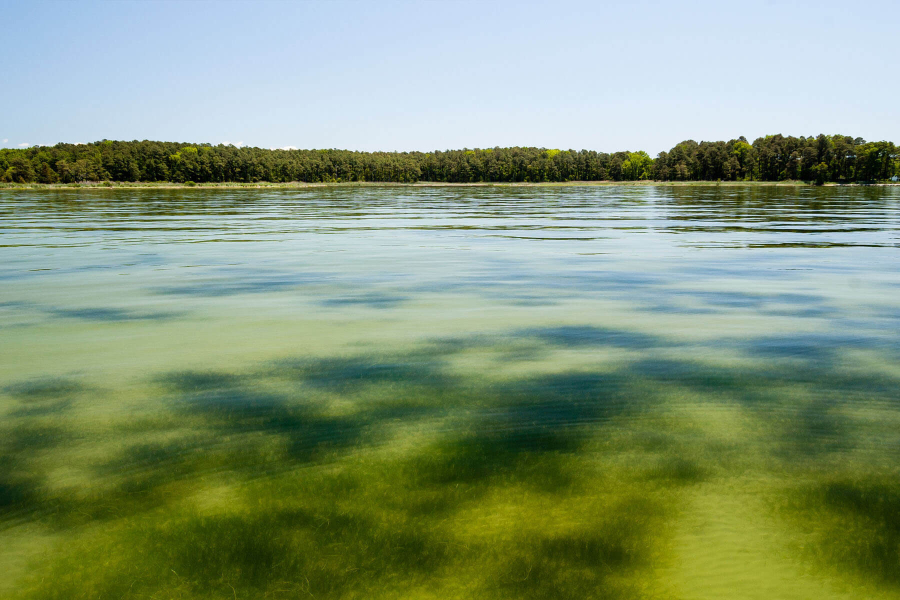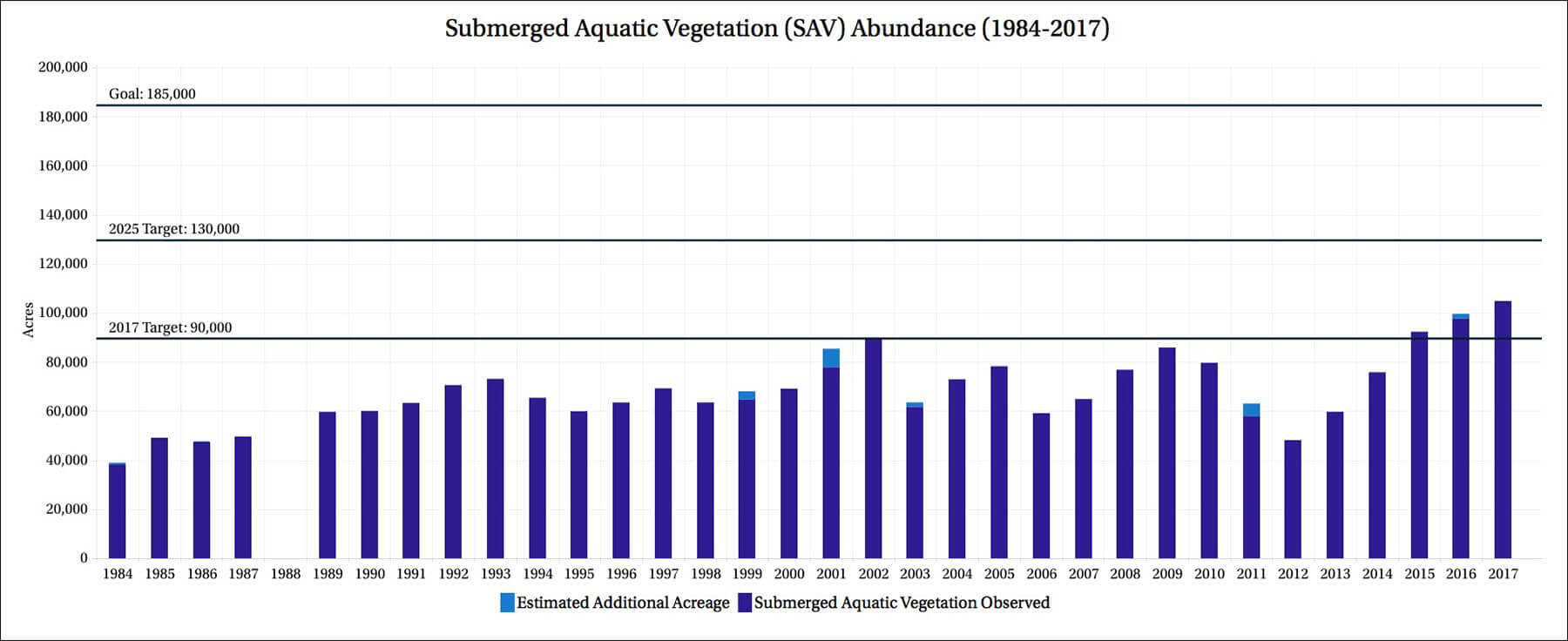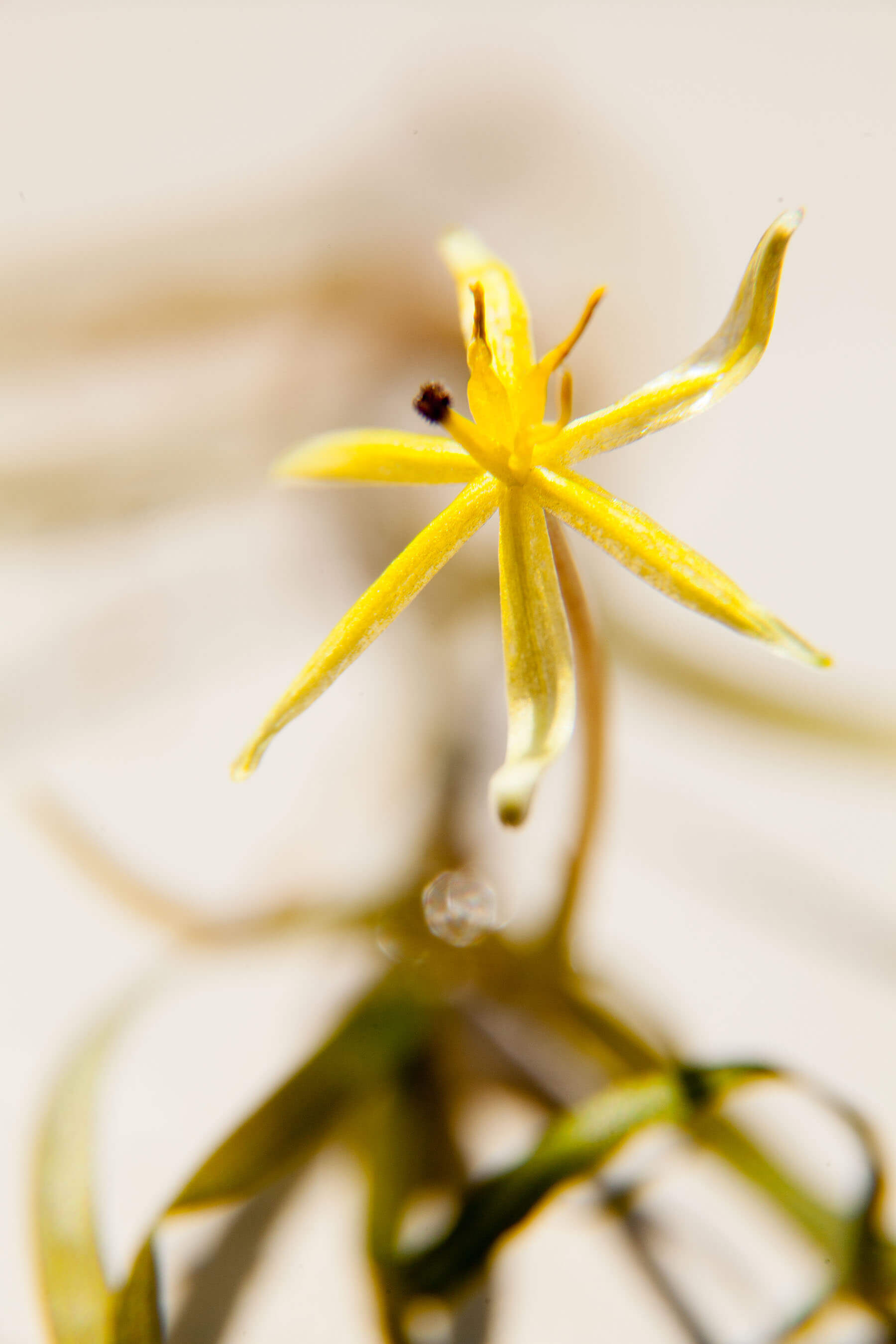Underwater grasses in the Chesapeake Bay experience record growth for third consecutive year
The total amount of grasses growing in the Bay marks 57 percent of our restoration goal

For the third consecutive year, the amount of underwater grasses in the Chesapeake Bay has broken decades-long monitoring records. According to data from the Virginia Institute of Marine Science (VIMS), an estimated 104,843 acres of grasses grew in the Bay in 2017. This total is 14,843 acres greater than the Chesapeake Bay Program’s 2017 restoration target, 57 percent of our ultimate restoration goal and the first time in modern history that grasses in the Bay have surpassed 100,000 acres.
Experts attribute last year’s rise in underwater grass abundance to a strong increase in the very salty, moderately salty and tidal fresh regions of the Bay. The very salty waters of the Bay saw a sustained recovery of eelgrass, while its moderately salty waters saw a continued increase in widgeon grass. Because widgeon grass is a “boom and bust” species whose abundance can rise and fall from year to year, a widgeon-dominant spike is not guaranteed to persist in future seasons. The wild celery, water stargrass and other species that have returned to the tidal fresh waters of the Bay are less prone to such changes in abundance.
In an article published by the Proceedings of the National Academy of the Sciences last month, scientists linked the recent resurgence of the region’s underwater grasses to the nutrient reductions made under the Chesapeake Bay Total Maximum Daily Load (Bay TMDL). Adopted in 2010, the Bay TMDL set pollution limits for each of the seven watershed jurisdictions. Under this “pollution diet,” our partners have put pollution-reducing practices in place to achieve 33 percent of the nitrogen reductions and 81 percent of the phosphorus reductions necessary to attain clean water standards.
“Seeing record growth in underwater grasses for the past three years just reinforces that our efforts to restore the Chesapeake Bay and its local tributaries are working,” said Chesapeake Bay Program Acting Director Jim Edward in a media release. “This achievement is a true example of the power a partnership can have, and I call upon all of our partners to continue their efforts toward this remarkable recovery.”

“It’s exciting to have finally surpassed 100,000 acres of SAV in the Bay,” said Natural Resources Biologist and Submerged Aquatic Vegetation Workgroup Chair Brooke Landry. “While we’re only a bit over halfway to our ultimate restoration goal, this is a big milestone for the Bay Program and its partners.”
Underwater grasses play a critical role in our environment. The plants absorb excess nutrients, trap suspended sediment, slow wave action and shoreline erosion, release oxygen into the water column, sequester carbon, and provide food and habitat to fish, blue crabs and waterfowl. As Landry said, “SAV is so much more than the plants themselves. They mean clear water and shoreline protection, carbon sequestration and climate mitigation. They mean more fish and crabs and waterfowl. And they mean memorable vacations and a healthy environment.”

The remarkable recovery of underwater grasses has revealed some misperceptions about the aquatic plants. As grass beds have expanded across the Bay, local resource managers have watched well-intentioned residents remove plants they thought were invasive and witnessed unaware boaters pull the plants up from the bottom of the Bay. In fact, even non-native underwater grasses can improve water clarity, and easy-to-adopt boating habits can keep boaters and grass beds safe: if you can’t avoid a grass bed while boating, just slow down and trim up your motor to protect the plants that do so much for the Bay.
Learn more about underwater grass abundance in the Chesapeake Bay.

Comments
Let's give the credit where it is due! TMDL is NOT the reason for the success! Give credit to farmers and the increase in no-till and cover cropping that they have done!
Thanks for this great message. Good to get to read some positive information. While this does not transfer exactly to Santa Monica Bay because it is actually EXPOSED COAST not a protected bay, we do have small protected areas that can benefit greatly by similar controls and restrictions on nutrient rich effluent discharge. A big HOOT to all who contributed to build this positive and developing outcome!
Thank you!
Your comment has been received. Before it can be published, the comment will be reviewed by our team to ensure it adheres with our rules of engagement.
Back to recent stories